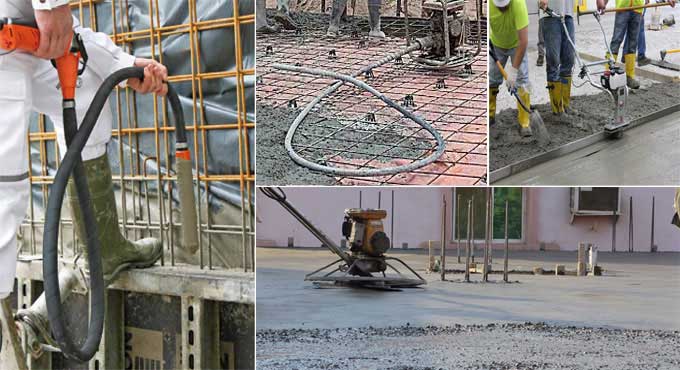NEWS | SOFTWARE | SHEET
Using Concrete Vibrators at the Construction Site - Types and Applications
A concrete vibrator uses for a variety of purposes in construction and structural applications. Concrete particles range in size, so vibrations with varying speeds can achieve effective compaction of concrete. There is an effort to develop poly-frequency concrete vibrators that can compact concrete of stiff consistency. Vibration frequencies for concrete compacting vibrators range from 2800 to 15000 RPM.
Using a concrete vibrator, it is possible to compact new mass concrete. Construction-related machines such as concrete vibrators are used in the construction industry.
Some are small and run solely on batteries, others on diesel or gasoline, and others are larger and run primarily on electrical power cords. You can help stabilize and maintain your concrete for long-term stability and maintenance by selecting the right concrete vibrator.
Types of Concrete Vibrator
Internal or Immersion or Needle Vibrator: The most common vibrating units used to test concrete are immersion or needle vibrators.
An eccentric vibrating element is encased within a steel tube that has a closed and rounded end on one end. A flexible tube connects this steel tube called a poker to a motor or diesel engine.
The diameter of the tube ranges from 40 to 100mm. Consider the space between reinforcing bars when measuring the poker of a formwork.
Vibrations occur up to 15000 times per second. A minimum range of 3000 to 6000 RPM with a 4g to 10g acceleration is a desirable minimum.
An immersion vibrator has a radius of action between 0.50 and 1 m. You should space the vibrators 8 to 10 times the diameter of the poker when immersing them in concrete. As a result, vibrations last between 30 seconds and 2 minutes. Each layer should be no more than 600mm thick.
External or Shutter Vibrator: External Vibrators are clamped firmly to formwork and concrete at predetermined points to vibrate them. Their compaction effect requires more power than that of internal vibrators. Vibratory machines compact concrete 450mm away from the face. So it is necessary to move it from one place to another.
An acceleration of 4g is used with a frequency range of 3000-9000 rpm. The external vibrator is used to compact thin in-situ sections that cannot be compacted by internal vibrators due to their shape and thickness.
Surface Vibrator: The concrete mass is directly covered with these. Concrete to be vibrated should not be deeper than 250 mm when using vibratory hammers to compact shallow elements. Surface vibrators are most effective when compacting very dry mixes. Vibrating pans and vibrating screeds are the most common surface vibrators.
Compaction of pavement slabs not exceeding 150mm in thickness and patching and repairing of damaged pavement slabs are the main uses of this type of vibrator. At accelerations of 4g to 9g, the frequency operates at about 4000 rpm.
Vibrating Table: An electric motor is powering the motion of a vibrating table, which consists of a rigid steel platform mounted on flexible springs. Vibrations at 4000 rpm will be caused by acceleration between 4 g and 7 g. The precast elements and test specimens in laboratories can be compacted efficiently on vibrating tables.
To get more clear ideas, go through the following exclusive construction video tutorial.
Lecturer: CIVIL BRAINS
Applications of Concrete Vibrator
Concrete vibrators remove air, keep concrete ingredients from settling, and prevent honeycomb formation. Vibrating concrete during its settling period has proven to be a useful technique that improves durability over time. Air bubbles get trapped in wet concrete while being poured, creating cavities or honeycomb like spaces.
Recommended Articles:
Download Concrete Construction Cost Estimating Software


